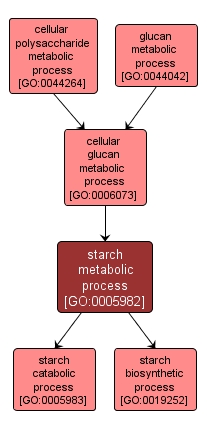| Desc: |
The chemical reactions and pathways involving starch, the most important reserve polysaccharide in plants. It is a glucan consisting of two components, amylose and amylopectin, which are both glucose homopolymers. Starch is synthesized as a temporary storage form of carbon and can be catabolized to produce sucrose. |














